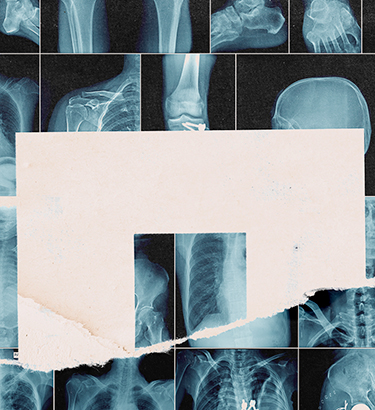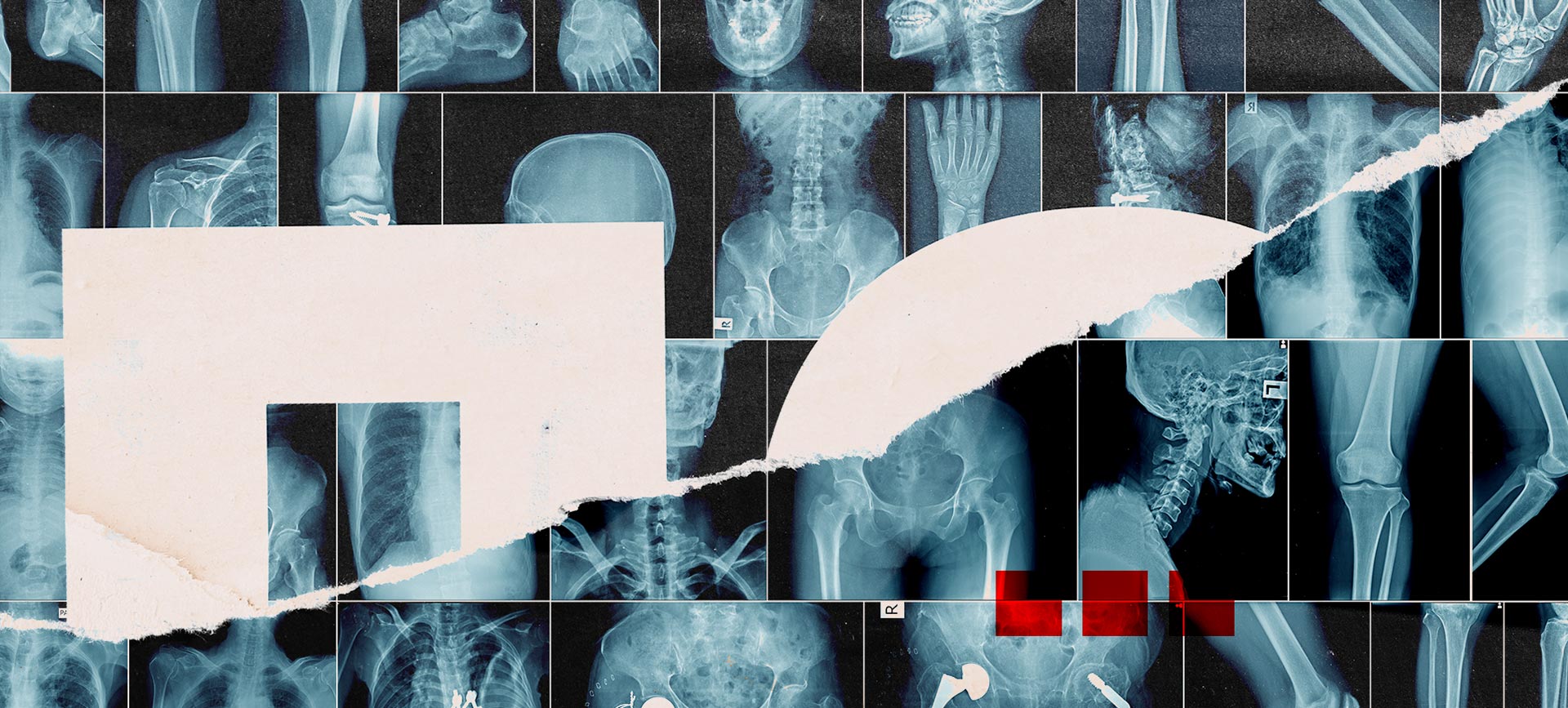Makary: Once you're accepted into medical school, you do four years of medical school training and you learn about medicine and different areas of medicine. My entire residency training after medical school was another six years. So, four years of college, four years of medical school, six years of training and then you become a full doctor.


Specialist Q&A: What Can a Radiologist Do for You?
Mina Makary, M.D., is a dual board-certified interventional and diagnostic radiologist, as well as an assistant professor of radiology at Ohio State University Wexner Medical Center. He completed both his interventional and diagnostic radiology training at Ohio State and has been in practice for four years.
Makary is also the director of the research program in radiology at Ohio State and has authored more than 100 manuscripts and abstracts. He specializes in interventional oncology, venous disease and reconstruction, complex hepatobiliary care and genitourinary interventions. He has expertise in embolization therapy of symptomatic uterine fibroids, benign prostatic hyperplasia (BPH) and osteoarthritis.
Makary spoke to Giddy as part of a series on medical specialists.
Editor's note: This interview has been edited for length and clarity.
There are two types of radiologists: diagnostic and interventional. Diagnostic radiologists look at CT [computed tomography] scans, X-rays, ultrasounds and MRIs [magnetic resonance imaging] to diagnose disease. Interventional radiologists take it a step further. Not only do they diagnose disease but they actually treat disease, and they do it using the same technologies. Interventional radiologists perform minimally invasive procedures.
I have training in both diagnostic radiology and interventional radiology, so I can diagnose and treat diseases. I love my job. It's a fascinating field because I can use technology to problem-solve and give patients hope.
The benefit of interventional radiology is because we make our procedures through these tiny incisions, I can build a new blood vessel in a person's body. I can treat cancer. I can even cure cancer. I can do all sorts of things…because we do all these things through tiny incisions, not through open surgery and scars. Patients have quicker recovery, fewer risks, less complications, they feel better and it's more cost-effective. It's all the positives we want to find in healthcare.
Any patient that has a medical illness of sorts [gets] some radiological study. If you have chest pain, you get a chest X-ray. If you have knee pain, you get some sort of CT [scan] at some point. If you have a stroke, you get a head CT.
Because radiology is so broad, we get to diagnose a broad spectrum of disease, and in this day and age with the advance of technology, most patients get diagnosed through radiology. The patients get to see us for all sorts of conditions: musculoskeletal conditions, neurological conditions, gastrointestinal conditions, pulmonary conditions, all sorts of things.
As an interventional radiologist, I also get to treat disease, so I treat cancer patients. We treat acute patients who have emergent situations, emergent bleeding…things like that. We take care of routine situations.
For example, in men's health and sexual health, as men get older, they get benign prostatic hyperplasia. The prostate gets bigger, and they end up going to the bathroom a lot and they have a hard time sleeping in the middle of the night. Their bladder is irritated and all that kind of stuff. Traditionally, the treatment for that is medicine but it's not supereffective. Once your symptoms are more advanced, the only thing they have is surgery. Surgery is effective but it has risks of sexual dysfunction.
One of the things I do is called prostatic artery embolization, where I can go in, find the vessels that go in the prostate, [administer] some medication that would slow the flow to these areas, and the prostate shrinks. I do this with a tiny incision, and the patient goes home the same day with a Band-Aid.
We also treat women who have fibroids. We can remove clots. Patients that have stroke or blockage of their blood vessels to their legs or other extremities, we can open those up with stents. The spectrum of my care as an interventional radiologist is very broad.
For all the patients who come to me, they don't need to do anything. Come and be prepared to explain symptoms. I might evaluate them directly or I might ask to get a CT scan ahead of time. In terms of preparation, be prepared to share your condition and your symptoms, and I'll do all the other work.
The bottom line is the interventional radiologist's door is open. The first visit will be a consultation. It does not necessarily mean they're automatically getting a procedure and a treatment. It's more of an introduction for the physician to understand the situation, to hear them out and see if they have good treatment options from an interventional radiology standpoint.
After that, they would have another visit where they actually have the treatment and they would be in a clinic or a patient procedure area or in the hospital. And then most interventional radiologists would follow up after that [to] see them again in the clinic to ensure they're doing OK. Some conditions require long-term follow-up. I've had patients who followed up for the last four years. I see them every few months to make sure they're OK.
There are conditions we treat and patients get better so they won't need more follow-up from us. It depends on the patient's condition. I would at least expect an initial visit, consultation and then the actual treatment, and then follow up at least one time in [the] clinic after. Moving forward, if they need additional follow-up or not will depend on their condition.
One of the things patients should ask is, "What are my treatment options?" A lot of times people know about the traditional treatments and the traditional ways we treat disease in terms of medications and open surgery, but they don't always know if [there are] newer treatments and innovations. Ask about the benefits and risks of a procedure as well as the alternatives.
In medicine, it's important to customize the treatment plan for the patient, meaning no two people who have the same disease are exactly the same. You can have the same condition, but every patient can have different backgrounds, different symptoms, different goals of care and different risk factors. We want to customize the treatment to their situation. One treatment may be good for one patient and may be not as good for another patient. You can ask about recovery after. You can ask about what things you can do to prepare if you're going to get a treatment or procedure from us.
There are different modalities of imaging, such as X-rays, ultrasounds, CT scans and MRIs. But there are other types of imaging modalities as well. They use different energies to see inside the body.
We have special training in studying what disease looks like on different modalities to understand what different conditions look like and how they evolve over time. We would obtain one of these studies and we would look at it and try to evaluate it.
A lot of times, to arrive at an accurate diagnosis, we don't just look at the images. We have to integrate information from the patients, from the laboratory values, signs and symptoms, and physical examination, and we put it all together and come up with a diagnosis.
I don't think there's a panacea or one specific innovation. In radiology, technology is evolving at a rapid pace. One of the most exciting things is the evolution of artificial intelligence [AI].
What AI offers is that as computers get better, they can help us take care of patients more efficiently and be better at diagnosing disease and predicting disease. It's very early on. There's a whole lot of work that needs to be done. But I think in the future, AI will help us become better doctors and improve our existing treatments for patients.









